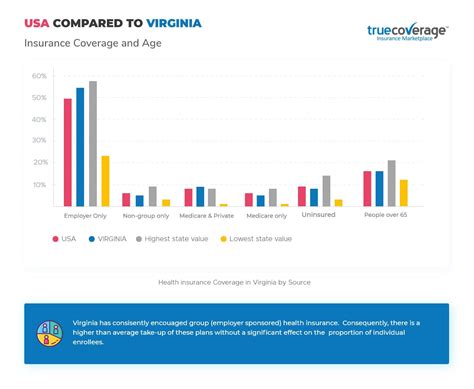Auto Insurer

In the ever-evolving landscape of the insurance industry, the role of auto insurers has become increasingly pivotal. With a rising number of vehicles on the roads and an ever-changing regulatory environment, the services and coverage offered by auto insurers are more critical than ever. This article delves into the intricate world of auto insurance, exploring its significance, the key players, and the future trends that are set to shape this industry.
Understanding the Auto Insurance Industry
The auto insurance industry is a vast and complex ecosystem, serving a diverse range of clients, from individual car owners to large-scale fleet operators. At its core, auto insurance provides financial protection against physical damage, bodily injury, and/or liability resulting from vehicle ownership, maintenance, or use. It is a legal requirement in many jurisdictions and a vital safeguard for both policyholders and third parties involved in road accidents.
The industry's operations are multifaceted, encompassing various aspects such as underwriting, risk assessment, claims management, and customer service. Underwriters, for instance, play a crucial role in evaluating the risk profile of each policyholder, setting premiums, and determining coverage limits. Meanwhile, risk assessment involves analyzing historical data, trends, and statistical models to forecast potential risks and set appropriate insurance rates.
The Evolution of Auto Insurance
Auto insurance has come a long way since its inception. Initially, it primarily focused on covering physical damage to vehicles and bodily injury to drivers and passengers. However, with the advent of technology and changing societal needs, the scope of auto insurance has expanded significantly. Today, it includes coverage for a wide array of scenarios, including comprehensive coverage (for non-collision incidents like theft, fire, or natural disasters), personal injury protection (PIP), uninsured/underinsured motorist coverage, and more.
Moreover, the industry has embraced technological advancements to streamline its operations. The introduction of telematics, for instance, has revolutionized the way insurers assess risk and price policies. Telematics devices installed in vehicles collect real-time data on driving behavior, allowing insurers to offer usage-based insurance (UBI) policies that reward safe drivers with lower premiums. This shift towards personalized insurance has not only improved customer satisfaction but also enhanced the accuracy of risk assessment.
| Insurance Type | Description |
|---|---|
| Liability Coverage | Covers bodily injury and property damage claims made against the policyholder by others involved in an accident. |
| Collision Coverage | Pays for repairs or replacement of the insured vehicle after a collision, regardless of fault. |
| Comprehensive Coverage | Covers damage to the insured vehicle caused by incidents other than collisions, such as theft, vandalism, fire, or natural disasters. |
| Uninsured/Underinsured Motorist Coverage | Protects the policyholder against financial loss if they're involved in an accident with a driver who has no insurance or insufficient insurance coverage. |

Key Players in the Auto Insurance Market

The auto insurance market is a highly competitive space, with a diverse range of players vying for market share. Here’s an overview of some of the key stakeholders:
Traditional Insurers
Traditional auto insurers have been the backbone of the industry for decades. These companies typically offer a wide range of insurance products, catering to individual drivers, families, and businesses. They often have extensive networks of agents and brokers who provide personalized advice and assistance to policyholders. With their established brand reputation and customer base, traditional insurers continue to hold a significant market share.
Direct-to-Consumer Insurers
The rise of the internet and digital technologies has paved the way for direct-to-consumer (DTC) insurers. These companies operate primarily online, leveraging technology to streamline the insurance buying process and reduce costs. DTC insurers often offer simplified insurance products with straightforward pricing and policy terms. They target tech-savvy consumers who prefer the convenience and transparency of an online insurance experience.
Specialty Insurers
Specialty insurers focus on specific segments of the auto insurance market, such as high-risk drivers, classic car owners, or fleet operators. These insurers often have a deep understanding of the unique needs and challenges of their target market, allowing them to offer tailored insurance solutions. For instance, insurers specializing in classic car coverage may provide flexible coverage options, allowing owners to choose between agreed value or stated value policies based on their vehicles’ unique characteristics.
Insurance Brokers
Insurance brokers act as intermediaries between policyholders and insurers. They provide impartial advice and help clients find the most suitable insurance coverage for their needs. Brokers have access to multiple insurance companies and can shop around for the best rates and coverage options. Their expertise and industry connections make them valuable assets, especially for clients who require complex or specialized insurance solutions.
The Impact of Technological Innovations
The auto insurance industry has been significantly influenced by technological advancements, which have transformed the way insurers operate and interact with their customers.
Telematics and Usage-Based Insurance
Telematics technology has revolutionized auto insurance by enabling insurers to gather real-time data on driving behavior. This data, which includes information on driving speed, acceleration, braking, and mileage, allows insurers to assess risk more accurately and offer personalized insurance rates. Usage-based insurance (UBI) policies, which are based on telematics data, incentivize safe driving and reward policyholders with lower premiums.
For instance, imagine a driver who typically drives in urban areas with heavy traffic. With UBI, their insurance premium could be adjusted based on their actual driving behavior, potentially resulting in a lower rate if they exhibit safe driving habits. This not only encourages safer driving but also provides a more fair and accurate pricing model for insurers.
Artificial Intelligence and Machine Learning
Artificial intelligence (AI) and machine learning (ML) technologies are increasingly being adopted by auto insurers to enhance their operations. These technologies enable insurers to automate various tasks, such as policy underwriting, claims processing, and customer service. AI-powered chatbots, for example, can handle routine customer inquiries, freeing up human agents to focus on more complex issues.
Furthermore, ML algorithms can analyze vast amounts of data to identify patterns and trends, helping insurers make more informed decisions. For instance, an ML model can analyze historical claims data to identify factors that contribute to higher claim frequencies or severities. This information can then be used to refine underwriting guidelines and pricing models, leading to more accurate risk assessment and better financial outcomes for insurers.
Digital Platforms and Customer Engagement
The digital transformation of the auto insurance industry has also enhanced customer engagement and satisfaction. Insurers are increasingly leveraging digital platforms, such as mobile apps and online portals, to provide policyholders with convenient access to their insurance policies and related services. These platforms enable policyholders to manage their policies, file claims, and receive real-time updates on the status of their claims.
Additionally, digital platforms allow insurers to offer a more personalized experience to their customers. For example, insurers can use customer data to provide tailored policy recommendations or offer additional coverage options based on the customer's specific needs and preferences. This level of personalization not only improves customer satisfaction but also helps insurers retain their customers and attract new ones.
Future Trends in Auto Insurance
The auto insurance industry is constantly evolving, and several key trends are expected to shape its future. Here’s a look at some of the most significant ones:
Connected Vehicles and Data Analytics
The increasing adoption of connected vehicles, equipped with advanced sensors and communication technologies, will generate vast amounts of data. Insurers will leverage this data to gain deeper insights into driving behavior and vehicle performance. By analyzing this data, insurers can develop more accurate risk profiles and offer personalized insurance products tailored to individual driving patterns.
Electric Vehicles and Autonomous Driving
The rise of electric vehicles (EVs) and autonomous driving technologies will bring about significant changes in the auto insurance landscape. EVs, with their lower maintenance costs and unique accident characteristics, will require insurers to adapt their policies and pricing models. Similarly, autonomous vehicles, which are designed to reduce human error, will likely result in a shift towards liability-based insurance models, where manufacturers or technology providers assume more responsibility for accidents.
Increased Focus on Preventive Measures
Insurers are increasingly recognizing the value of preventive measures in reducing accident risks and claims costs. As a result, they are investing in initiatives that promote safer driving, such as driver education programs, telematics-based coaching, and incentive programs for safe driving behaviors. By encouraging policyholders to adopt safer driving practices, insurers can reduce the frequency and severity of accidents, leading to lower claims costs and improved profitability.
Expansion into New Markets
With the growing demand for auto insurance worldwide, insurers are expanding their operations into new markets, both domestically and internationally. This expansion provides opportunities for insurers to tap into untapped markets and diversify their customer base. However, it also presents challenges, such as understanding local regulations, cultural differences, and varying risk profiles. Insurers will need to adapt their business models and strategies to successfully navigate these new markets.
Regulatory Changes and Industry Consolidation
The auto insurance industry is subject to constant regulatory changes, which can significantly impact insurers’ operations and business models. Insurers must stay abreast of these changes and adapt their strategies accordingly. Additionally, the industry is expected to see continued consolidation, with larger insurers acquiring smaller ones to gain economies of scale and enhance their market presence. This consolidation will likely lead to more efficient operations and improved customer service.
How does auto insurance work, and what does it cover?
+Auto insurance provides financial protection against various risks associated with vehicle ownership and use. It typically covers physical damage to the insured vehicle, bodily injury or medical expenses for the policyholder and their passengers, liability for injuries or property damage caused to others, and other specific perils such as theft, fire, or natural disasters. The specific coverage and limits depend on the policyholder’s chosen coverage options and the terms of their insurance contract.
What factors influence auto insurance rates?
+Auto insurance rates are influenced by a variety of factors, including the policyholder’s driving record, age, gender, location, type of vehicle, and the level of coverage chosen. Insurers also consider historical claim data and statistical models to assess risk and set premiums. Additionally, external factors such as inflation, changes in repair costs, and regulatory changes can impact insurance rates.
How can I reduce my auto insurance costs?
+There are several strategies to reduce auto insurance costs. These include maintaining a clean driving record, comparing quotes from multiple insurers, opting for higher deductibles, taking advantage of discounts (such as safe driver discounts or bundling discounts), and considering usage-based insurance policies that reward safe driving behaviors with lower premiums.
What should I do in case of an auto accident?
+In the event of an auto accident, it’s important to remain calm and prioritize safety. If anyone is injured, call emergency services immediately. Gather as much information as possible at the scene, including photographs, witness statements, and the other driver’s contact and insurance details. Notify your insurance company as soon as possible and provide them with all the relevant information. Follow their instructions for filing a claim and be prepared to cooperate with their investigations.



